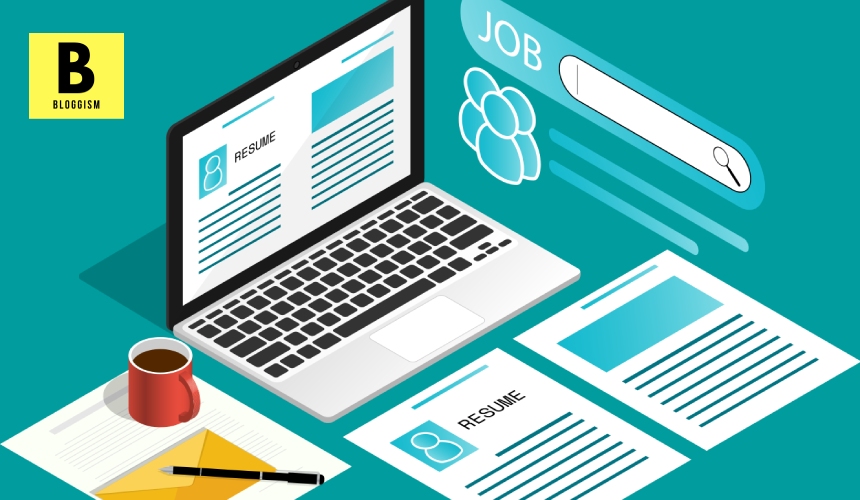
“Your reputation is often your resume”
-Jaclyn Johnson.
It is often interpreted that the first impression you make with the hiring committee is during your interview. The first impression you make with the hiring committee is through your resume to tell you the truth. Everything that the hiring committee needs to know, from your academic achievements to your current project, is in that resume. With the increasing number of job applications per post, your resume is your only chance to get an interview. What if, though, your resume never makes it to the hiring committee? How is that possible, you might wonder? Allow me to explain. Many firms employ an Artificial Intelligence-based tool to filter out resumes that meet their specific specifications when applications for a particular position increase. You might want to explore reworking your resume if it has the same dull standard collection of templates.
But wait! Don’t go googling out or searching Instagram reels for “How to write an ATS friendly resume?”
Do not worry! We know just the trick.
When we talk about jobs, we frequently mention resumes. However, no one ever explains the specifics of a resume. So, we’re here to address your questions about what a resume is and why it’s so crucial.
You’ve probably seen resume-based Instagram reels that have over a million likes. So, logically, you’d be interested to know more about resumes.
A resume is a professionally formatted document that describes your professional credentials, such as real-world work experience, acumen, qualifications, and notable career achievements. The most successful and problem-solving resumes are tailored to the specific scenario, focusing on expertise and skills relevant to the desired job they are applying for. Therefore, a professional CV is unavoidable if you want to land an interview.
At its most fundamental level, a resume consists of these five sections:
1) Name and contact details.
2) Personal Summary
3) Academic History
4) Internships
5) Work Experience
Depending on your accomplishments, you may want to include titles such as:
1) Training and Certification
2) Projects and Achievements
3) Research Projects
Writing a resume that is ATS friendly can get extremely challenging. If I had the choice, I’d get it professionally written! However, if writing a resume is what you want, stay assured. We’ve got your back!
What is ATS?
ATS stands for Applicant Tracking System. Recruitment competition is fiercer than ever, and finding the right talent will never be more challenging for recruiters. With an increase in the inflow of resumes and positions available in a Multinational Corporation, it is challenging to keep track of the entire process from posting a job online to evaluating the resumes. In these circumstances, hiring managers have to incorporate solutions that optimize the employment process as a whole. Application Tracking System (ATS) is a software application that allows the electronic handling of recruitment and hiring needs.
The data is supplied into the ATS algorithm in such a way that the program can systematically organize hundreds of applications depending on the algorithm. Specific algorithms, for example, screen resumes depending on how well they fit the ‘job description’ can be used. Using an application tracking system to search for essential skills and titles is a structured approach for recruiters to sift resumes. So, if you’re applying to a multinational firm, there’s a good chance the ATS will go over your resume first before it reaches the hiring committee.
How can you create ATS-friendly resumes to get you an interview for your ideal job?
How many Google searches have you had to do in an attempt to make your resume ATS friendly?
I’m sure you’ve been through hundreds of tutorials, blogs, and reels to make sure your resume is on point and ATS friendly. But did you get that right? Well, here we are with a quick guide on how to create an ATS-friendly resume that guarantees you your dream job! Here’s what you need to do. First things first!
1. Pick up a Template
Yes! You heard me correctly! You might be thinking that I’ve just contradicted myself. But, hey, I’m not talking about the standard, uninteresting template, am I? Choose a template that is simple but appealing. For starters, you can start to work with ATS-friendly templates. Remember, simplicity is the key. Anything too much, on the other hand, could be disastrous. Fancy fonts, graphics, charts, and tables may not be filtered by the ATS software, causing your resume to be rejected. While creating your ATS-friendly resume, ensure that it highlights your experience and skills in a straightforward manner rather than using unnecessary charts, graphs, or symbols. I’d also suggest using precise, commonly used heads to avoid throwing the ATS software off, causing your resume to end up in the wrong pile.
2. Google Keywords According to your Job Listing
Whenever the applicant tracking system “starts reading” a resume, it is configured to do the same thing that a person would do: It’s looking for critical bits of information to see if you’re a good fit for a job position. Searching for specific keywords is one of the approaches that the ATS uses to narrow down a candidate pool. The recruitment team or hiring manager can choose which keywords to look for based on the most crucial skills, qualifications, experience, or traits for the job. For example, particular majors may be required for entry-level positions, while specific coding languages may be necessary for tech positions. Certain degrees and certifications may also act as important keywords based on your sector. Employers will want to know right away if you’re legally able to do the job you’re looking for, especially in professions like the medical profession or the paramedics, where state licenses are required.
The first step is to Google out keywords for your job description.
Browsing a few different job postings while keeping keywords in mind will help you understand the keywords for your area, qualification and experience, and role. Concentrate on a job description and jot down some of the terms that come to mind for your job listing.
Now browse over your job posting and thoroughly read the job description. If a specific requirement for the job position is mentioned in the job description, utilize it in your resume without using a thesaurus. The ATS software cannot employ and comprehend synonyms, unlike the human mind.
Let’s say that you’re applying for the job title of Assistant Researcher in the domain of stem cell research. The job description mentions, “Should be proficient in gene editing and handling tools.” Now, mirror back the exact same line to your CV. This is true for all certifications, software, hard programming skills, soft programming abilities, interpersonal skills, and projects.
3. Use Keywords in your Resume.
Now that you have picked up a few keywords, it’s time to incorporate them into your resume! But before integrating it into your resume, here’s the thing – DO NOT GO OVERBOARD WITH THE KEYWORDS! Your keywords need to be appropriately spaced throughout the content to ensure the ATS software can adequately evaluate and categorize your resume. Read your resume thoroughly. Once you have read your resume, you shall have a brief idea of where you can replace your words with keywords. Make sure the words you’ve chosen to replace fit in the statement. You don’t want to sound incorrect. Nothing more can be more disastrous in your resume than a statement sounding incorrect!
Remember! The secret to passing the ATS program is to use the keywords from the job posting. You might want to include an extra set of action verbs and technical skills from the description so that the software recognizes the potential of your resume rather than sorting it in the wrong pile. If you’re not sure which keyword to use, add a slash and use both. For example, “Proficient with Microsoft Excel/Google sheets.”
4. Customization is Key
Every job requires a tailored resume to make sure you stand out in the application process. Just like you need uniqueness to your resume, you also need specific keywords for the job title you’re applying to. This appears to be a lengthy process, but it will be worthwhile once you receive a call from the hiring committee for an in-person interview. Make sure to check if your keywords have been updated to match the job titles you’re applying for.
As the ATS software is being extensively used, it’s very crucial that you get past the software directly in front of the hiring committee. And the key to this is Customization! Every job position you’re applying to, has its own set of roles and responsibilities that you as an employee will have to fulfill. And that’s precisely what the ATS software is going to look out for. So with changing roles, make sure you make changes, especially to your hard skills (types of programming languages, management, marketing, and languages you are proficient with, etc.)
5. Proofread your resume.
Of worst thing that may happen to you while sending out your resume is that you use incorrect English and make grammatical mistakes. It’s even worse when you’re attempting to apply for an England-based shift in a BPO! So make sure you proofread your resume once you’ve incorporated keywords to avoid making erroneous statements or grammatical errors. Also, remember to blend the keywords in the sentence, so it doesn’t detract from the point you’re attempting to make
Now that you’re all set to create an ATS-friendly resume, here are a few things to keep in mind while writing your resumes.
1. Do not apply for positions/job titles that you’re not qualified for.
As the “robots” that stand between you and your new employment, ATSs have a terrible reputation. Thousands of applications are rejected with every new job opening. Most of us tend to blame the ATS. However, the majority of the applicants are usually unqualified for the job position, while some are utterly unimportant.
2. Do not apply to multiple jobs in the same company.
The ATS software is used throughout the firm. As a result, it’s not uncommon for them to learn that you’ve applied for multiple roles at the same company. A recruiter won’t be able to discern what you’re interested in or if you’re confident in your skill sets if you do this.
If an organization has two similar job openings, definitely apply to both. You can also apply to both if you have a diverse set of talents and abilities and would be equally happy in two entirely different professions. But, the key is to customize your resume before you send them out.
3. Do not go overboard with your keywords.
Spacing the keywords evenly throughout the resume is crucial.
4. Do not include any tables or fancy formatting.
It may be heartbreaking to hear, but you should probably get rid of that pricey resume format or the fancy resume you love so much. Most ATSs will convert your resume to a text-only format to scan it for essential keywords. Then, at the end of processing your resume, the ATS software removes any tables or any fancy layouts you’ve added to your resume. With the tables and fancy fonts gone, your context suddenly stops making sense! At the worst, the ATS won’t extract the critical information, and a hiring manager may never see your beautiful designs—or learn about the experience and talents that genuinely qualify you for the position.
What resume format should you follow for writing an ATS-friendly resume?
Robots and programs have taken the world by storm. You can find automation in every process these days. Recruitment and job application have also been automated with tons of recruitment software. Applicant tracking systems are programs that aid in automating recruitment for companies. But along with the application of hi-tech software, job applying has become more competent. You have to beat the robot to appear as the best choice.
If you are composing a resume for an ATS, you need to draft your resume in a format that gets seamlessly shortlisted by ATS. In such cases, you must use a chronological resume format. A chronological resume format is a resume that presents your work history in sequential order of position and time. The most recent job that you are doing must be at the top, and your initial job relevant to the industry should be at the bottom. A chronological resume beats the AI in ATS and helps you get shortlisted.
So there you go! Here’s all that you need to make an ATS-friendly resume ready to make past the ATS software, right onto the desk of the hiring committee.


